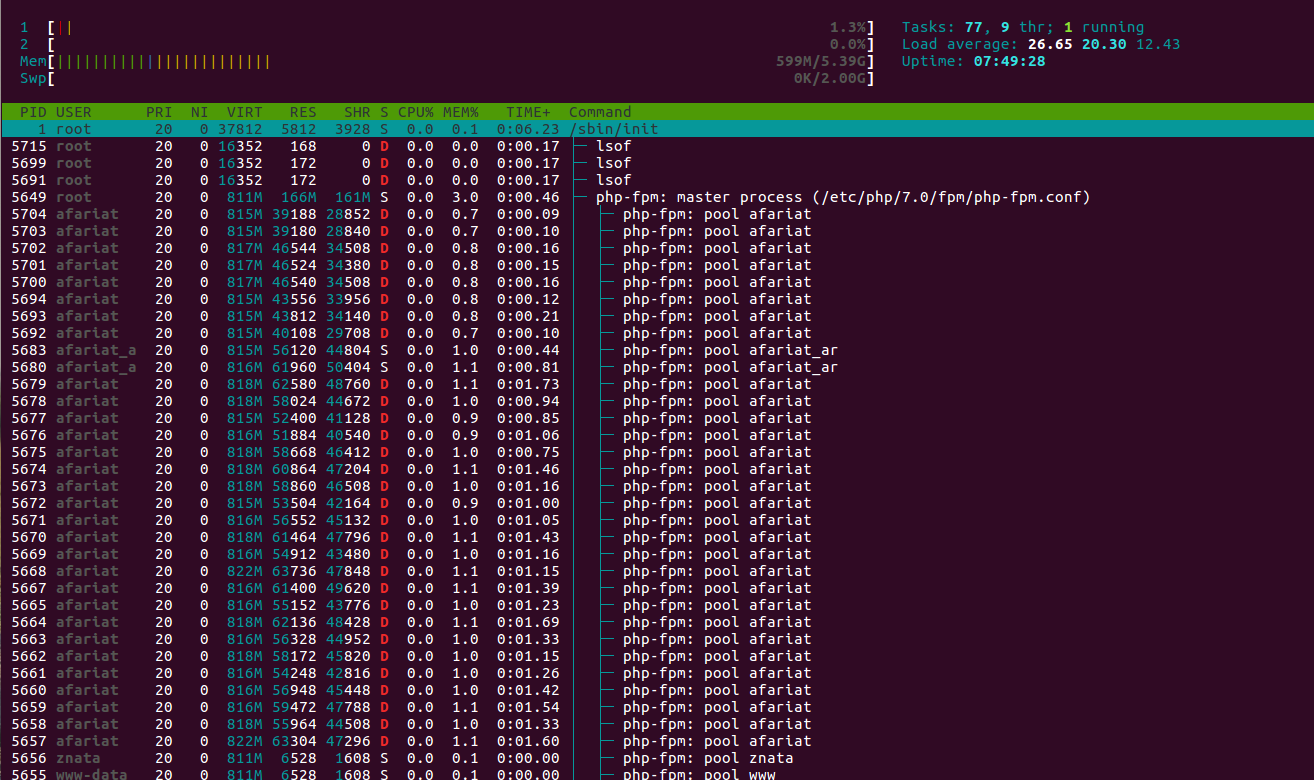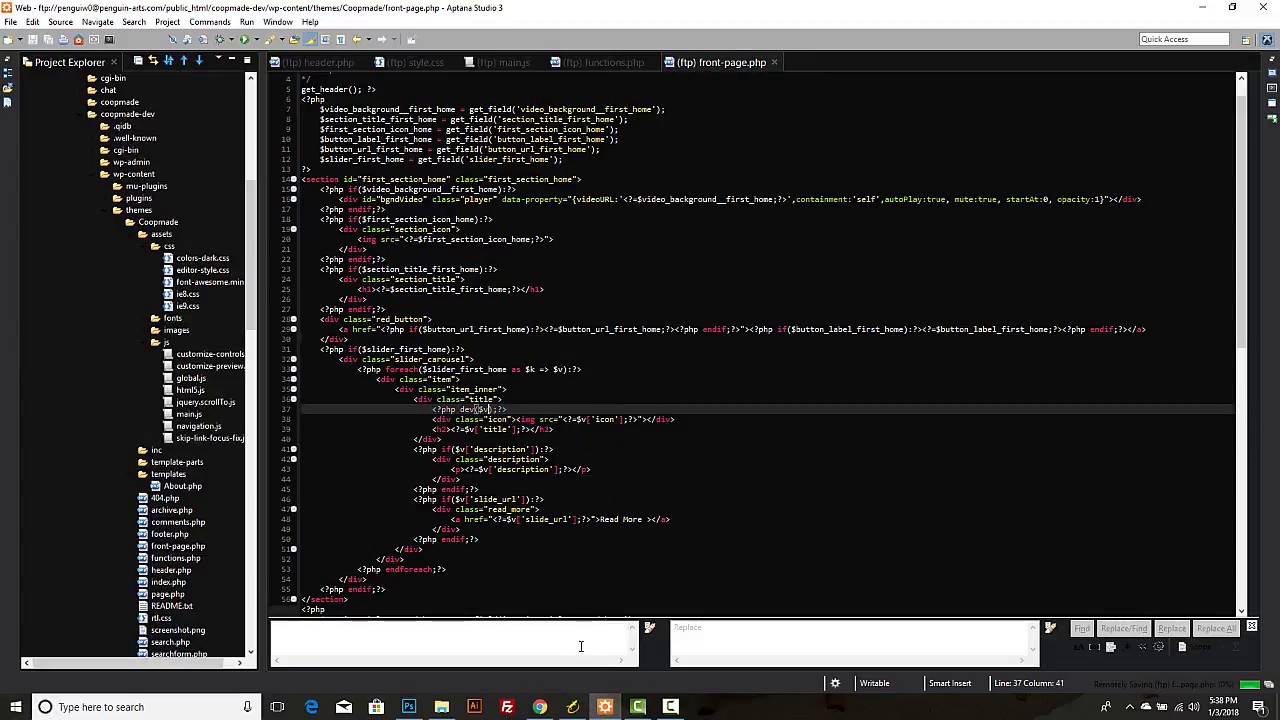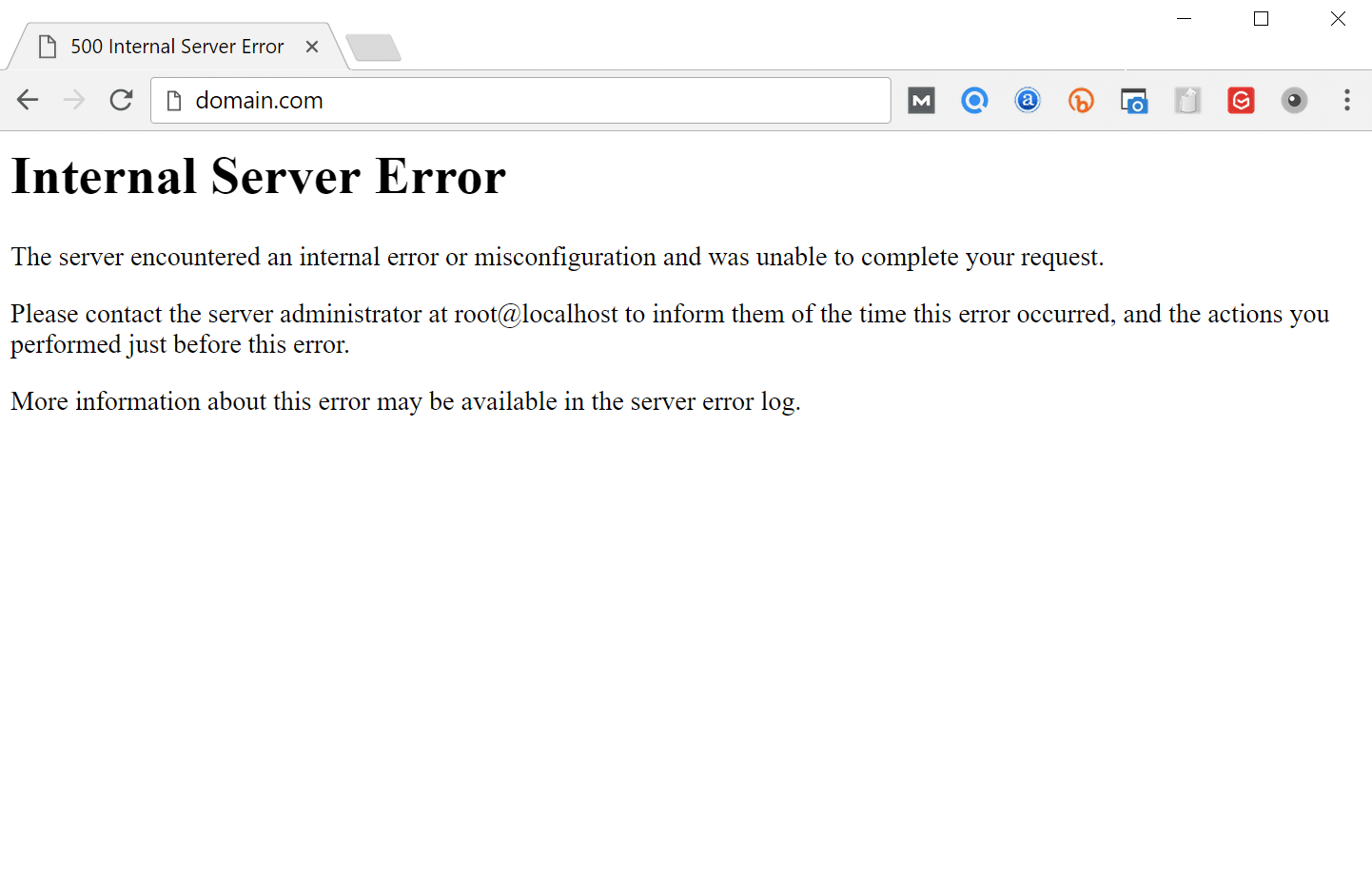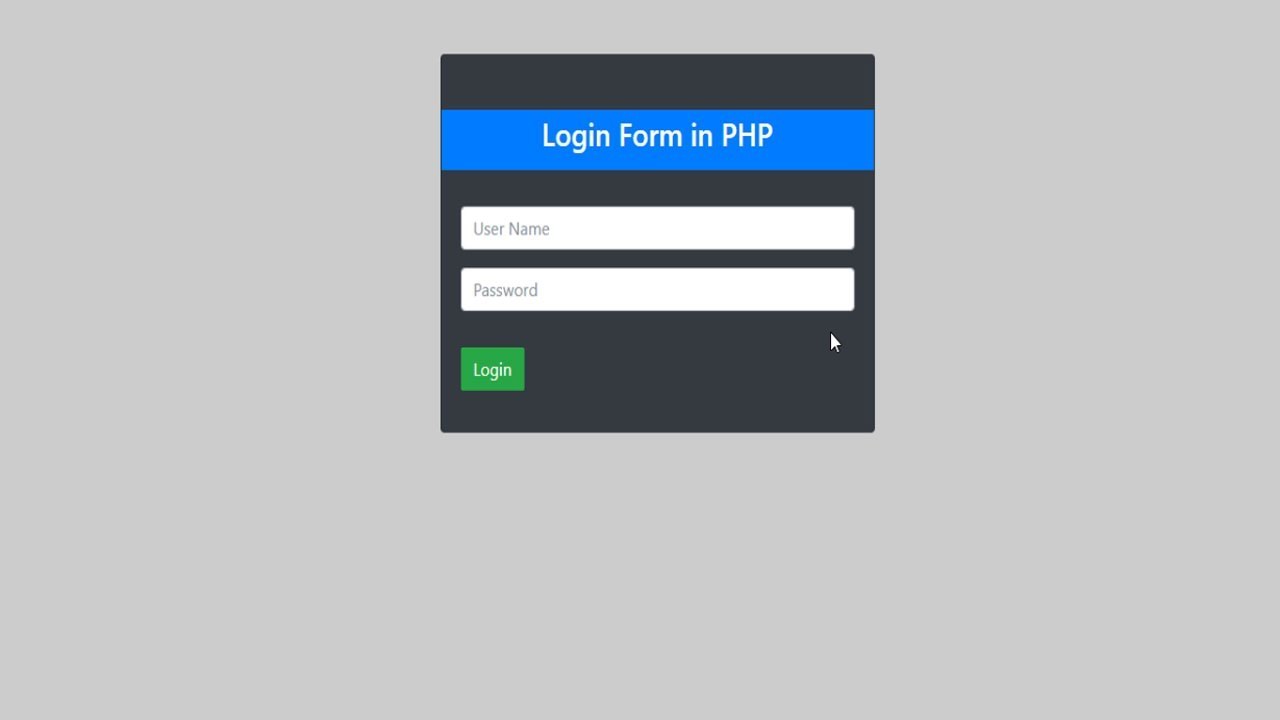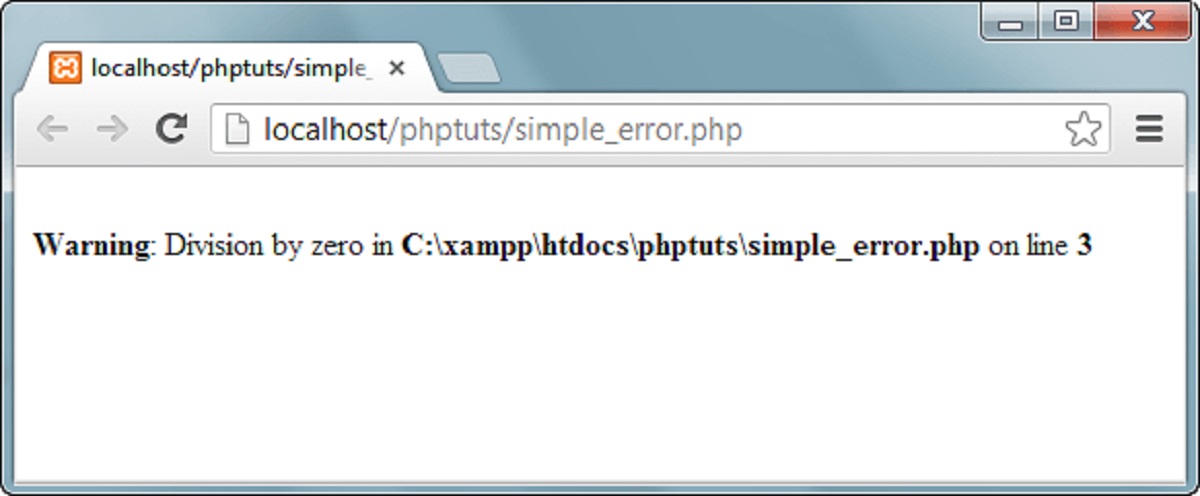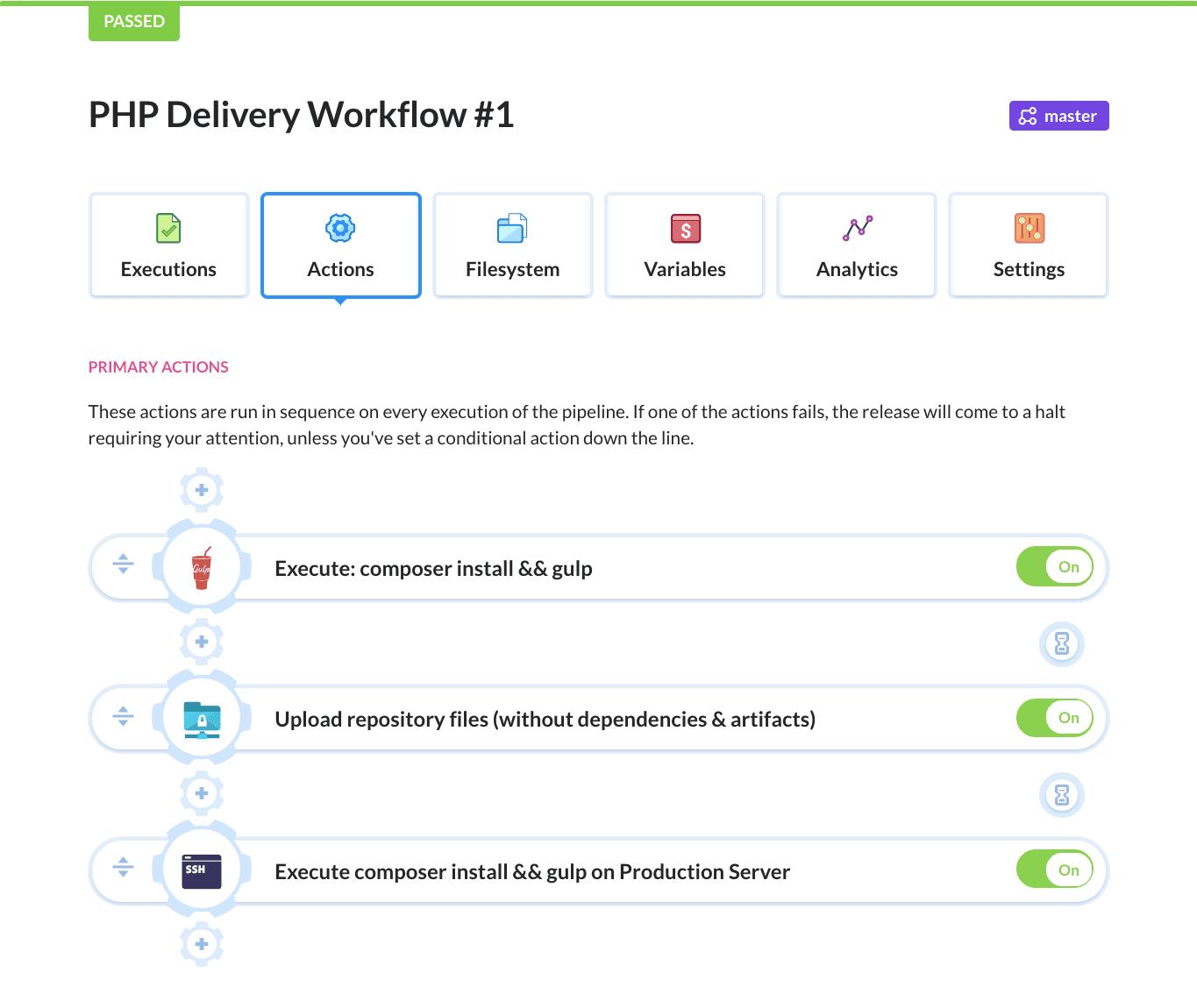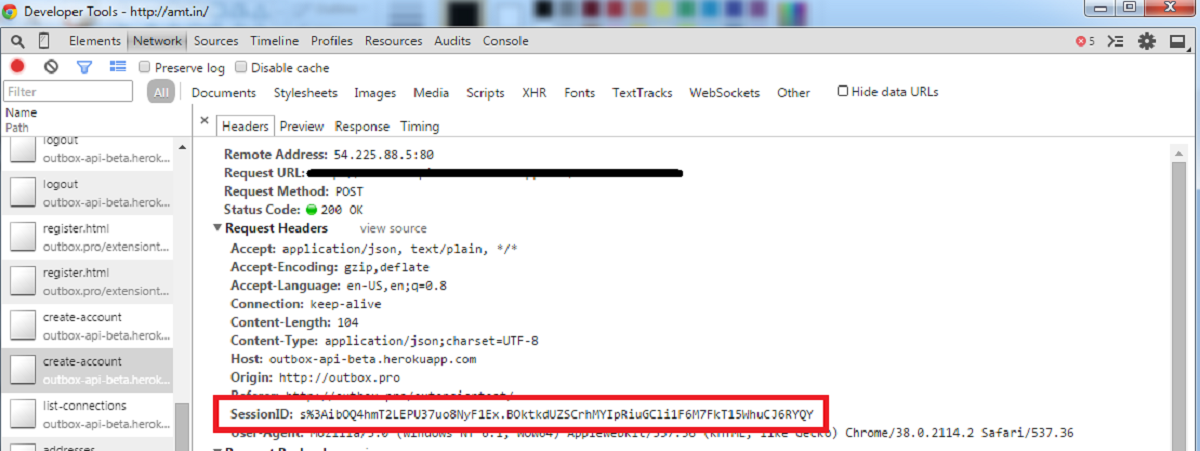Introduction
In today’s digital age, logging is an integral part of any PHP application. Whether you’re building a small website or a complex web application, efficient logging practices can provide invaluable insights into your code’s behavior, help identify and debug errors, and improve overall system performance.
So, what exactly is logging? In simple terms, logging refers to the process of recording events, errors, and other relevant information that occurs during the execution of a PHP application. These logs serve as a trail of breadcrumbs, offering developers a way to track the flow of their code, analyze its performance, and troubleshoot issues.
Logging plays a crucial role in PHP applications for several reasons. First and foremost, it allows developers to gain visibility into how their code is functioning. By logging specific events, such as user actions, database queries, or error messages, developers can trace the execution path and identify potential issues.
Furthermore, logs provide a historical record of the application’s activity, allowing developers to understand patterns and trends over time. This can be particularly helpful when diagnosing intermittent errors or identifying performance bottlenecks.
Another important benefit of logging is its role in error detection and debugging. When unexpected errors occur, logs can capture valuable information, such as error messages, stack traces, and variable values at the time of the error. Analyzing these logs can significantly speed up the debugging process, reducing downtime and improving the user experience.
Setting up logging in PHP is a straightforward process, and there are various libraries and built-in functions available to assist developers in achieving their logging needs. Each approach has its own advantages and considerations, depending on factors such as project requirements, scalability, and ease of use.
In this article, we will explore different logging techniques and libraries in PHP, delve into best practices for effective logging, discuss logging levels and their usage, and discover how to leverage log files for debugging purposes. So, let’s dive into the world of PHP logging and unlock its benefits for your applications.
What is Logging?
Logging, in the context of PHP, refers to the process of capturing and storing events, messages, and other relevant information that occur during the execution of a PHP application. These logs serve as a record of the application’s activity and can provide valuable insights for developers and system administrators.
When a PHP application runs, it generates various events and messages, such as user actions, database queries, error notifications, and more. Logging allows developers to capture and record these events in a structured manner, making it easier to analyze and troubleshoot issues.
So, why is logging important? Logging provides several benefits for PHP applications, including:
- Debugging: When an application encounters errors or unexpected behavior, logs can help developers identify the root cause of the problem. By logging relevant information, such as error messages, stack traces, and variable values, developers can trace the execution flow and diagnose issues more effectively.
- Performance Analysis: Log files can reveal bottlenecks and performance issues in an application. By logging metrics such as execution times, database query durations, or memory usage, developers can identify areas for optimization and improve overall system performance.
- Auditing: Logging is crucial for tracking user actions and auditing system activity. By logging user interactions, login attempts, or access to sensitive information, developers can monitor and analyze application usage for security and compliance purposes.
- Troubleshooting: When users report issues or encounter errors, logs can provide valuable information for technical support teams. By analyzing the relevant logs, support personnel can understand the context of the problem and provide more efficient solutions.
- Historical Analysis: Logs serve as a historical record of the application’s activity. They can be useful for identifying patterns, trends, or recurring issues over time. By analyzing long-term log data, developers can make informed decisions about system improvements and optimizations.
To implement logging in PHP, developers can utilize various libraries, frameworks, or built-in functions. These tools provide functions for creating logs, specifying log levels, writing to different outputs (e.g., files, databases, or remote servers), and more. Choosing the appropriate logging approach depends on factors such as project requirements, complexity, scalability, and ease of integration.
In the following sections, we will explore different logging techniques and libraries available in PHP, discuss best practices for effective logging, and cover how to leverage log files for debugging purposes. So, let’s continue our journey into the world of PHP logging and unlock its benefits for your applications.
Why Logging is Important in PHP Applications
Logging plays a crucial role in PHP applications, providing a myriad of benefits that contribute to the overall development process. Let’s delve into some of the key reasons why logging is important:
Error Detection and Debugging: PHP applications can encounter errors and exceptions during their execution. Logging allows developers to capture these errors and log relevant information, such as error messages, stack traces, and the context in which the error occurred. By analyzing these logs, developers can pinpoint the root cause of the error and debug the application more effectively. This not only saves time during the debugging process but also ensures a smoother user experience by resolving issues promptly.
Performance Monitoring and Optimization: Logging can provide valuable insights into the performance of PHP applications. By logging metrics such as execution times, memory usage, and database query durations, developers can identify performance bottlenecks and areas for optimization. This enables them to fine-tune their code, enhance system efficiency, and improve overall application performance.
Auditing and Compliance: Logging is essential for auditing user actions and ensuring compliance with security standards and regulations. By logging critical events such as user logins, file access, or data modifications, developers can monitor and track user activity. This helps in detecting any suspicious or unauthorized activities and maintaining a secure environment.
Long-term Analysis and Troubleshooting: Logs serve as a historical record of an application’s activity. They provide a wealth of information that can be analyzed over time to identify trends, patterns, and recurring issues. This historical analysis can be invaluable when troubleshooting intermittent errors or assessing the impact of code changes over an extended period.
Real-time Monitoring and Alerting: Logging enables real-time monitoring and alerts for critical events or conditions. Developers can set up log monitoring tools to track specific log entries and be notified immediately when certain events occur. This proactive approach allows them to respond promptly to issues and take appropriate action to minimize any potential disruptions.
Collaboration and Communication: Logging facilitates effective collaboration among developers and stakeholders. By sharing log files, team members can gain a better understanding of an application’s behavior, discuss issues based on concrete evidence, and collectively work towards finding solutions. Logs also serve as a communication tool between developers and support teams, providing valuable context and information that aids in resolving user-reported issues effectively.
Overall, logging is a fundamental practice in PHP development. It provides developers with crucial data and insights that aid in error detection, debugging, performance optimization, compliance, troubleshooting, and facilitating effective collaboration. By implementing robust logging mechanisms, PHP applications can operate more reliably, efficiently, and securely.
How to Set Up Logging in PHP
Setting up logging in a PHP application involves configuring the logging framework or library to capture and store logs. Here are the general steps to set up logging:
1. Choose a Logging Library: There are several logging libraries available in PHP, such as Monolog, Log4php, and KLogger. Evaluate these libraries based on features, compatibility with your PHP version, community support, and ease of integration.
2. Install the Logging Library: Once you have selected a logging library, download and install it into your PHP project. This typically involves using Composer, a dependency management tool for PHP, to fetch and install the library and its required dependencies.
3. Configure the Logging Framework: Each logging library has its own configuration mechanism. Typically, you’ll need to create a configuration file where you can define settings such as log levels, log formats, and log output destinations (e.g., files, databases, or remote servers).
4. Define Loggers: In most logging libraries, loggers are used to capture and handle specific log events. Define loggers in your code based on the components or modules of your application that you want to log. For example, you might have separate loggers for authentication, database queries, or error handling.
5. Log Events and Messages: To log events and messages, use the appropriate logging methods provided by the library. These methods are typically named based on the severity level of the log entry, such as “info,” “debug,” “warning,” or “error.” Include informative and meaningful messages in your logs to provide context for debugging and analysis.
6. Handle Log Outputs: Determine where you want to store the log output. You can configure the logging library to write logs to files, databases, or send them to remote servers. Each destination option has its own specific configuration settings that you’ll need to set up.
7. Set Log Levels: Log levels dictate the severity of the events being logged. Common log levels include “debug,” “info,” “warning,” “error,” and “critical.” Set appropriate log levels for each logger based on the importance of the component or module being logged. This allows you to control the verbosity of the logs based on your specific needs.
8. Formatted Logging: Consider formatting your log entries to include useful information such as timestamps, error codes, request IDs, or user IDs. This can simplify troubleshooting and enhance the readability of the logs.
9. Test Logging Functionality: Test your logging setup by deliberately introducing an error or generating specific log events. Verify that the logs are being captured correctly and that they provide the necessary information for debugging and analysis.
10. Regular Log Maintenance: Implement a log maintenance strategy to manage the size and retention of your log files. Consider implementing log rotation, which involves archiving or deleting older log files to prevent them from consuming excessive disk space.
By following these steps, you can successfully set up logging in your PHP application. Remember to refer to the documentation of the chosen logging library for specific configuration details and advanced features.
Different Logging Libraries in PHP
When it comes to logging in PHP, there are several libraries available that provide robust and flexible logging capabilities. Here, we will explore some of the popular logging libraries in PHP:
1. Monolog: Monolog is a widely used logging library that offers a variety of handlers and formatters. It supports logging to files, databases, and remote servers via various protocols such as HTTP, TCP, or UDP. Monolog allows you to customize log levels, formats, and channels, making it highly configurable and suitable for projects of all sizes.
2. Log4php: Log4php is a PHP port of the well-known Log4j logging framework. It provides a flexible and extensible logging solution with multiple log levels, appenders, and layouts. Log4php allows you to configure logging through XML or PHP configuration files, making it easy to integrate into your PHP applications.
3. KLogger: KLogger is a lightweight logging library designed for simplicity and ease of use. It offers basic logging functionality with customizable log levels, file-based storage, and straightforward configuration. KLogger is suitable for smaller projects or scenarios where a lightweight logging solution is sufficient.
4. Psr/Log: The Psr/Log library provides a common interface for logging in PHP. It defines a set of standardized methods and log levels that logging libraries can adhere to, allowing for interchangeable integration. Psr/Log allows you to switch between different logging implementations without modifying your code extensively, providing flexibility and code maintainability.
5. Laravel Log: Laravel, a popular PHP framework, includes a logging library that provides convenient features for logging in Laravel applications. It supports various log channels, different log levels, and provides integration with Laravel’s error handling and exception reporting system.
6. Symfony Monolog Bundle: Symfony, another widely used PHP framework, integrates with Monolog through the Symfony Monolog Bundle. It provides pre-configured log channels and handlers, allowing developers to leverage Monolog’s powerful logging capabilities within Symfony applications.
7. Laravel Log Viewer: Laravel Log Viewer is a package specifically designed for viewing and analyzing log files in Laravel applications. It provides a user-friendly interface to navigate through logs, filter them based on various criteria, and easily troubleshoot issues.
These are just a few examples of the many logging libraries available in PHP. Each library offers distinct features, flexibility, and integration options. When selecting a logging library for your project, consider factors such as logging requirements, ease of configuration, community support, and compatibility with your chosen PHP framework or ecosystem.
Take the time to explore and experiment with different logging libraries to find the one that best fits your project’s needs. Remember that logging is an essential aspect of application development, providing valuable insights, aiding in debugging, and improving overall system performance.
PHP Built-in Logging Functions
In addition to third-party logging libraries, PHP also provides built-in logging functions that can be used to capture and store logs directly within your application. These built-in functions offer a basic level of logging functionality, making them suitable for simple logging requirements or situations where using external libraries may not be necessary.
Here are some of the key built-in logging functions in PHP:
1. error_log: The error_log function allows you to log a message to the configured error logging destination, such as a file or syslog. It accepts parameters for the log message, log type (e.g., “error,” “warning,” “notice”), and additional configuration options. This function is commonly used to capture errors and exceptions for debugging purposes.
2. trigger_error: The trigger_error function generates a user-level error message and logs it to the defined error handling system. It is useful for generating custom error messages within your code. The function accepts parameters for the error message, error type, and additional debugging information.
3. syslog: The syslog function allows you to log a message to the system logger. On UNIX-based systems, such as Linux, the logs are usually stored in the syslog files, whereas on Windows, the logs are sent to the Event Log. syslog provides various log levels, such as LOG_ERR, LOG_WARNING, LOG_NOTICE, and more.
4. openlog and closelog: The openlog and closelog functions are used to open and close connections to the system logger, respectively. They are typically used in conjunction with the syslog function. openlog allows you to specify a custom identifier for your log entries, making it easier to identify logs originating from your application.
5. error_reporting: The error_reporting configuration directive allows you to control which types of errors and warnings should be logged or displayed. By setting the appropriate value for error_reporting, you can control the level of detail in the generated error messages and tailor the logging behavior based on your needs.
6. set_error_handler: The set_error_handler function allows you to define a custom error handler function that is called whenever an error of a specified type occurs. This allows you to capture and process errors in a way that suits your application’s requirements. Within the error handler function, you can perform tasks such as logging error messages and handling them accordingly.
While these built-in logging functions may not offer the same level of complexity and flexibility as dedicated logging libraries, they can serve as a starting point for basic logging needs or situations where simplicity and minimal dependencies are desired.
It’s important to note that these built-in logging functions typically write logs to predefined destinations and may not offer extensive customization options. If you require more advanced logging features, such as log rotation, output formatting, or logging to different destinations, utilizing a specialized logging library would be a more suitable choice.
Consider your project requirements, complexity, and logging needs when deciding whether to use the PHP built-in logging functions or opt for a third-party logging library.
Best Practices for Logging in PHP
Logging is a critical aspect of PHP application development that can greatly enhance debugging, troubleshooting, and performance optimization efforts. To ensure effective and efficient logging, it’s important to follow best practices. Here are some key practices to consider when implementing logging in PHP:
1. Define a Clear Logging Strategy: Plan and define your logging strategy early in the development process. Determine what events, errors, and information should be logged, which log levels to use, and where logs should be stored. A well-defined strategy ensures consistency and provides clear guidelines for logging throughout the project.
2. Use Appropriate Log Levels: Log levels, such as “debug,” “info,” “warning,” and “error,” represent the severity of events being logged. Use log levels appropriately to differentiate between different types of messages. Utilize the appropriate log level for each specific situation to ensure logs provide the necessary information without unnecessary noise.
3. Include Relevant Information: When logging events, include relevant information such as timestamps, error codes, user IDs, or request IDs. This additional context can be valuable for troubleshooting and understanding the circumstances surrounding a log entry.
4. Properly Format Log Entries: Format log entries consistently and clearly. Include essential details, such as dates and times, log levels, and the message itself. Formatting log entries consistently aids readability and simplifies log analysis and parsing when necessary.
5. Avoid Logging Sensitive Information: Ensure that you avoid logging sensitive information, such as passwords, credit card numbers, or personal data. Logging such information can introduce security risks and violate privacy regulations. Be cautious and sanitize log entries to remove any sensitive details.
6. Implement Log Rotation: To manage log file sizes, implement log rotation. Log rotation involves periodically archiving or deleting older log files to prevent them from consuming excessive disk space. Configure log rotation based on your specific needs and the available options in your chosen logging library or framework.
7. Monitor and Analyze Logs: Regularly review logs to identify patterns, trends, and potential issues. Utilize log monitoring tools to receive alerts for critical events or errors. Analyzing logs can provide valuable insights into application performance, user behavior, and security threats. Use log analysis to fine-tune your application and improve overall system reliability.
8. Consider Centralized Logging: For complex applications deployed across multiple servers or environments, consider implementing centralized logging. Centralized logging involves sending logs from various sources to a central repository, making it easier to manage and analyze logs across different components or instances of your application.
9. Test Logging Functionality: Verify that your logging setup is working correctly by testing it under various scenarios. Generate intentional errors or events to ensure that logs are being captured accurately. By testing your logging functionality, you can have confidence in its reliability when your application is in production.
10. Regularly Review and Update Logging Configuration: Review your logging configuration periodically to ensure it aligns with your current application needs. As your application evolves, logging requirements may change. Stay up to date with logging best practices and adjust your configuration as necessary to maintain effective logging.
Following these best practices will help you establish a solid foundation for logging in your PHP applications. Consistent and efficient logging plays a crucial role in maintaining application performance, detecting issues, and improving overall system reliability.
Logging Levels and Their Usage
Logging levels are used to categorize and prioritize the severity of log entries in PHP applications. Each logging level represents a specific type of event or message being logged. Understanding the different logging levels and their usage is essential for effective log management and troubleshooting. Here are the commonly used logging levels and their recommended usage:
1. DEBUG: The DEBUG level is used to log detailed information that is useful for debugging and development purposes. It provides insights into code execution flow, variable values, and other information that helps developers identify and fix issues during the development and testing phases of the application. It is typically used sparingly and disabled in production environments to minimize unnecessary log output.
2. INFO: The INFO level is used to log informative messages that indicate the normal operation of the application. INFO logs can include important milestones in the application’s execution, such as startup and shutdown events, successful completion of significant processes, or other noteworthy occurrences. INFO logs are helpful for monitoring the application’s activity and providing a comprehensive overview of its functioning.
3. WARNING: The WARNING level is used to log events that could potentially lead to errors or unexpected behavior but are not critical at the moment. It is typically used to notify developers and system administrators of anomalies or conditions that may require attention but do not immediately impact the application’s functionality. Warning logs can serve as early warning signs of potential issues that should be investigated further.
4. ERROR: The ERROR level is used to log significant errors that prevent the application from functioning correctly. An ERROR log indicates a problem that needs attention and typically requires immediate investigation. These logs help developers identify critical issues, pinpoint their causes, and take the necessary steps to resolve them. ERROR logs often contain error messages, stack traces, and other details that aid in troubleshooting issues.
5. CRITICAL: The CRITICAL level is used to log severe events that indicate the application’s failure or imminent failure. CRITICAL logs represent critical errors or exceptional situations that require immediate attention and intervention. This level is reserved for high-priority issues that can result in a complete system malfunction or data loss. CRITICAL logs should trigger immediate alerts and be investigated promptly to minimize any potential impact.
6. EMERGENCY: The EMERGENCY level is the highest and most severe logging level. It is used to log events that require immediate action to prevent severe consequences, such as a system-wide failure or compromise. EMERGENCY logs are rare and indicate critical failures that demand immediate attention from system administrators or emergency response teams.
It’s important to note that the specific implementation and naming of logging levels may vary depending on the logging library or framework being used. It is recommended to follow the conventions and guidelines provided by the logging library you choose to ensure consistency and compatibility.
When deciding which logging level to use, consider the severity and impact of the event being logged. Strive to use the appropriate level that best reflects the importance and urgency of the logged message. Properly assigning logging levels allows developers, system administrators, and support teams to identify and prioritize issues effectively, facilitating efficient troubleshooting and maintaining system integrity.
How to Use Log Files for Debugging
Log files are invaluable tools for debugging PHP applications. They provide a detailed record of events, errors, and other relevant information that can help identify and resolve issues. Here are some best practices on how to effectively use log files for debugging:
1. Enable Logging: First and foremost, ensure that logging is enabled in your PHP application. Configure the logging library or enable the built-in logging functions to capture the necessary information. Depending on your setup, you may need to adjust the log level to ensure that all relevant events are logged.
2. Reproduce the Issue: Try to reproduce the issue or error that you are experiencing in your application. Perform the actions or steps that trigger the problem. It’s important to have a clear understanding of how to recreate the issue consistently to analyze the log files effectively.
3. Analyze Log Entries: Open the log files and search for relevant log entries related to the issue or error you are troubleshooting. Look for errors, warnings, or other log messages that provide insights into the problem. Pay attention to timestamps, error messages, stack traces, and any additional contextual information in the log entries.
4. Check Error Messages: Focus on the error messages recorded in the log files. Error messages often provide crucial information about the nature of the problem, including the file, line number, and description of the error. Analyzing error messages can help identify the root cause of the issue and provide guidance for resolving it.
5. Review Stack Traces: If available, review the stack traces recorded in the log files. Stack traces provide a traceback of the function calls leading up to the error. It can help pinpoint the exact location in the code where the error occurred and identify any intermediate functions or methods that contributed to the issue.
6. Examine Variables and Context: Log files often include relevant variable values and contextual information at the time of the logged event. Look for log entries that capture the state of variables, input data, or other relevant contextual details. Examining this information can provide insights into the conditions or data that contributed to the issue, supporting effective debugging.
7. Apply Debugging Techniques: With the information gathered from the log files, apply debugging techniques to trace the issue further. Use tools like breakpoints, logging statements, or step-by-step debugging to narrow down the problem area. The log files act as references and guides, helping you navigate through the code and identify the specific code paths involved.
8. Iterate and Refine: Debugging is an iterative process. Analyze the log files, make changes to your code, and retest the application. Continuously refine your debugging approach based on the insights gained from the log files. The information in the log files will guide you in identifying and resolving the underlying issues.
9. Collaborate and Seek Help: If you are facing challenges in troubleshooting the issue based on the log files, collaborate with peers, forums, or support channels. Share relevant log entries and details to seek assistance. Others may provide fresh perspectives or insights that can help resolve the problem more efficiently.
10. Logging for Future Debugging: During the debugging process, consider adding additional logging statements to capture more specific information or track the flow of the application. These logs can act as aids for future debugging sessions or help identify patterns and technical debt that need to be addressed.
Remember, log files are an invaluable resource for debugging PHP applications. They provide a wealth of information that can shed light on issues, errors, and unexpected behavior. By effectively utilizing log files, you can streamline your debugging process and resolve issues more efficiently.
Logging to Remote Servers
When it comes to logging in PHP applications, logging to remote servers can be a useful approach. By sending logs to a centralized remote server, you can efficiently manage and analyze logs from multiple sources. This section explores best practices for logging to remote servers:
1. Choose a Logging Transport Protocol: Select a suitable transport protocol to send logs to the remote server. Common protocols include HTTP, TCP, UDP, or secure protocols like HTTPS. Consider the security, reliability, and performance requirements of your application when choosing the appropriate transport protocol.
2. Secure Communication: Encrypt log transmission to ensure the confidentiality and integrity of the logs. Secure protocols like HTTPS provide a secure channel for transmitting logs over the network. Implementing encryption mechanisms helps protect sensitive information contained within the logs.
3. Configure Log Aggregation: Set up log aggregation on the remote server to collect and organize logs from multiple sources. Ensure that log files are segregated based on the source or application to facilitate efficient log analysis and troubleshooting.
4. Transfer Log Data in Batches: Send log data in batches rather than individual log entries. Batching log entries minimizes network overhead and reduces the number of network round trips. By combining multiple log entries into a single payload, you can improve the efficiency of log transfer.
5. Implement Retry Mechanisms: Networking issues or intermittent connectivity problems can occur when logging to remote servers. Implement retry mechanisms to handle failed log transfers and network errors gracefully. Retry strategies should include exponential backoff and jitter to avoid overwhelming the remote server with excessive log retransmissions.
6. Set Up Authentication: Authenticate the logs sent to the remote server to ensure that only authorized sources can send logs and prevent unauthorized access to log data. Utilize authentication mechanisms such as API keys, tokens, or certificates to establish trust between the sending application and the remote server.
7. Monitor Log Transfer: Monitor log transfer to the remote server to ensure that logs are being successfully transmitted and received. Implement automated checks or alerts to detect any issues with log transmission. Regularly review log transfer logs and monitor for any failures or anomalies that may require investigation.
8. Evaluate Log Retention: Determine the appropriate log retention policy on the remote server based on regulatory compliance, security, and storage considerations. Consider factors such as legal requirements, historical analysis needs, and system performance impact when deciding how long to retain logs on the remote server.
9. Secure Remote Server Access: Protect the remote log server by implementing appropriate security measures. Restrict access to authorized personnel and employ security practices such as strong passwords, access controls, and monitoring to safeguard log data from unauthorized access or tampering.
10. Leverage Log Analysis Tools: Make use of log analysis tools or services to efficiently analyze and visualize logs collected on the remote server. These tools provide powerful querying capabilities, visualization options, and alerting mechanisms that help identify trends, anomalies, and patterns in log data.
Logging to remote servers offers numerous benefits, including centralized log management, scalability, improved performance, and simplified troubleshooting. By following best practices for logging to remote servers, you can efficiently manage and analyze logs from multiple sources while ensuring the security and integrity of log data.
Monitoring and Analyzing Logs
Monitoring and analyzing logs is a crucial aspect of managing PHP applications. It allows you to gain insights into the behavior of your application, detect anomalies, identify performance issues, and troubleshoot problems efficiently. This section explores best practices for monitoring and analyzing logs:
1. Define Monitoring Objectives: Clearly define your monitoring objectives. Determine what specific events, metrics, or patterns you want to monitor within your log data. This could include monitoring for specific error messages, tracking performance metrics, or detecting unusual user behavior.
2. Set Up Automated Log Monitoring: Implement automated log monitoring solutions that can continuously analyze log data in real-time. These tools can proactively detect and alert you about critical events or abnormalities, enabling quick response and minimizing potential disruptions.
3. Configure Alerting Mechanisms: Set up alerting mechanisms to notify you when specific log events or conditions occur. Define thresholds for key metrics that, when crossed, trigger alerts. This helps you stay informed about important events and ensures that you can take action promptly.
4. Consolidate Logs: Centralize log files from multiple sources onto a single server or log aggregation system. This consolidation simplifies log management and analysis, allows for more comprehensive troubleshooting, and facilitates a holistic view of the application’s performance.
5. Utilize Log Analysis Tools: Leverage log analysis tools or services that provide advanced querying, filtering, and visualization capabilities. These tools enable you to search, filter, and analyze log data efficiently. Additionally, they offer graphical representations, dashboards, and reporting functionalities that make it easier to identify trends, outliers, and other useful insights within log data.
6. Perform Regular Log Analysis: Regularly review and analyze log data to identify patterns, trends, and potential issues. Look for recurring errors, warning signs of performance degradation, or other indicators of anomalies within the log data. Regular analysis helps you spot emerging issues and identify areas for improvement.
7. Track Key Performance Metrics: Define and track key performance metrics within your logs, such as response times, database query durations, or memory utilization. By monitoring these metrics, you can identify performance bottlenecks, detect abnormal resource usage, and optimize your application for better efficiency.
8. Correlate Log Data with Other Metrics: Correlate log data with other relevant data sources, such as application analytics, server monitoring tools, or performance metrics. This provides a holistic view of the system, allowing you to pinpoint the root cause of issues more accurately.
9. Perform Root Cause Analysis: When troubleshooting, conduct a root cause analysis by analyzing relevant log entries and tracing the events leading up to an issue. Identify the series of events or actions that resulted in the problem and determine the underlying cause. This analysis helps prevent similar issues from occurring in the future.
10. Continuously Refine and Optimize: Continuously refine your monitoring and log analysis processes based on the insights gained from the analysis. Use the knowledge gained from log monitoring and analysis to optimize your application, improve performance, and enhance the user experience.
By following these best practices for monitoring and analyzing logs, you can effectively monitor your PHP applications, proactively identify potential issues, optimize performance, and maintain a robust and reliable system.
Conclusion
Logging plays a vital role in PHP application development, providing valuable insights into the behavior, performance, and troubleshooting of your application. By capturing and analyzing log data, you can proactively detect and resolve issues, optimize performance, and enhance the user experience.
In this article, we explored various aspects of logging in PHP applications. We learned about the importance of logging, its benefits, and why it is crucial to implement effective logging practices. We discussed different logging libraries available in PHP, as well as the built-in logging functions offered by PHP itself.
We also covered best practices for setting up logging, including configuring logging libraries, defining logging levels, and formatting log entries. Additionally, we explored how to effectively use log files for debugging, including reproducing issues, analyzing log entries, and leveraging debugging techniques.
In addition, we discussed logging to remote servers, monitoring and analyzing logs, and the importance of log monitoring and analysis tools. These practices ensure efficient log management, real-time monitoring of critical events, and the ability to gain valuable insights from log data.
By following these best practices, you can identify and resolve issues quicker, optimize the performance of your PHP applications, and ensure a smooth and reliable user experience. Logging empowers developers to gain a deeper understanding of application behavior, troubleshoot effectively, and make informed decisions to enhance their application’s overall performance and reliability.
So, embark on your logging journey, implement the right logging strategies, utilize appropriate logging libraries or functions, and leverage log analysis tools to gain valuable insights. Embrace the power of logging in PHP applications and unlock its benefits to ensure the success of your projects.









